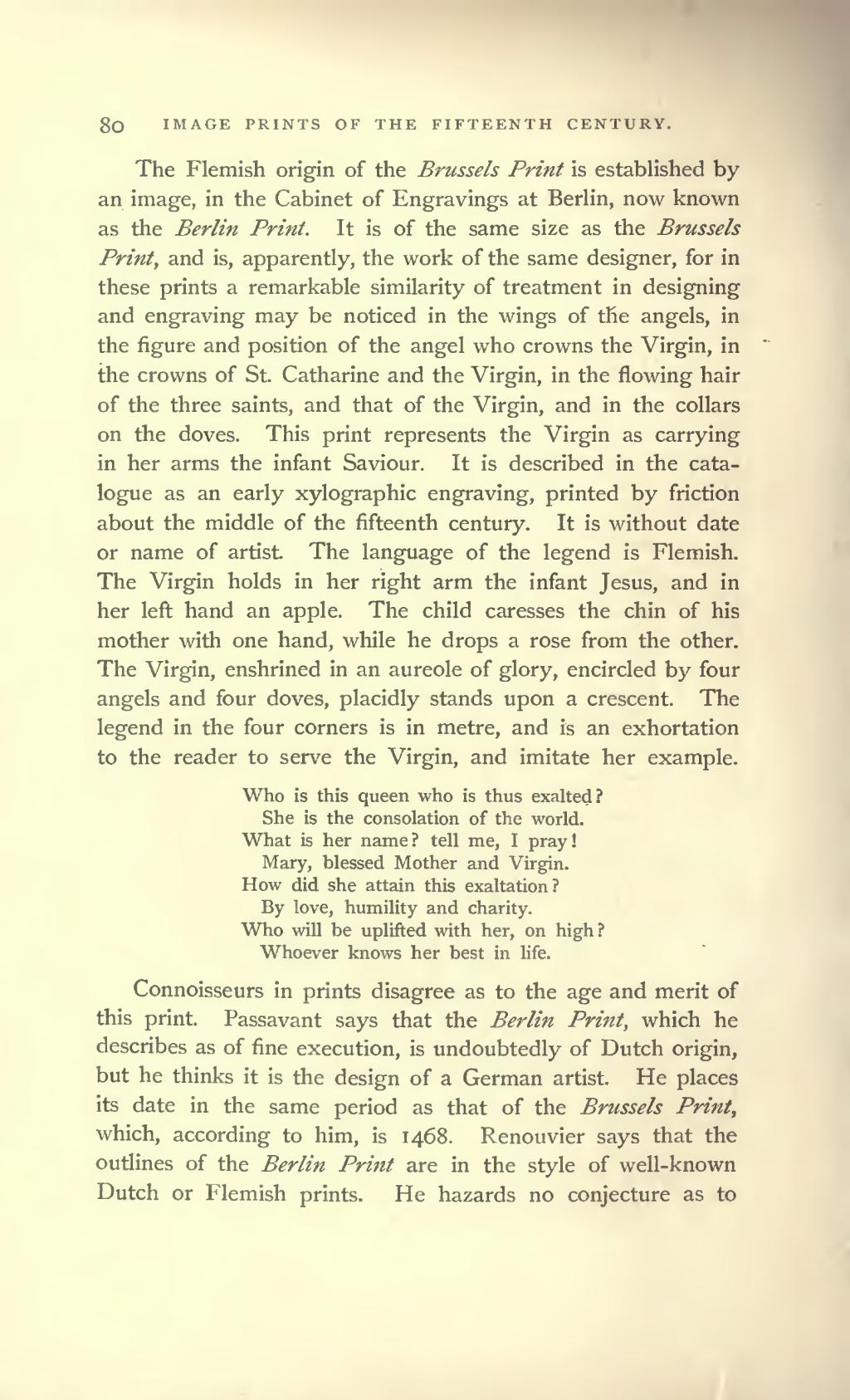The Flemish origin of the Brussels Print is established by an image, in the Cabinet of Engravings at Berlin, now known as the Berlin Print. It is of the same size as the Brussels Print, and is, apparently, the work of the same designer, for in these prints a remarkable similarity of treatment in designing and engraving may be noticed in the wings of the angels, in the figure and position of the angel who crowns the Virgin, in the crowns of St. Catharine and the Virgin, in the flowing hair of the three saints, and that of the Virgin, and in the collars on the doves. This print represents the Virgin as carrying in her arms the infant Saviour. It is described in the catalogue as an early xylographic engraving, printed by friction about the middle of the fifteenth century. It is without date or name of artist. The language of the legend is Flemish. The Virgin holds in her right arm the infant Jesus, and in her left hand an apple. The child caresses the chin of his mother with one hand, while he drops a rose from the other. The Virgin, enshrined in an aureole of glory, encircled by four angels and four doves, placidly stands upon a crescent. The legend in the four corners is in metre, and is an exhortation to the reader to serve the Virgin, and imitate her example.
Who is this queen who is thus exalted?
She is the consolation of the world.
What is her name? tell me, I pray!
Mary, blessed Mother and Virgin.
How did she attain this exaltation?
By love, humility and charity.
Who will be uplifted with her, on high?
Whoever knows her best in life.
Connoisseurs in prints disagree as to the age and merit of this print. Passavant says that the Berlin Print, which he sescribes as of fine execution, is undoubtedly of Dutch origin, but he thinks it is the design of a German artist. He places its date in the same period as that of the Brussels Print, which, according to him, is 1468. Renouvier says that the outlines of the Berlin Print are in the style of well-known Dutch or Flemish prints. He hazards no conjecture as to
